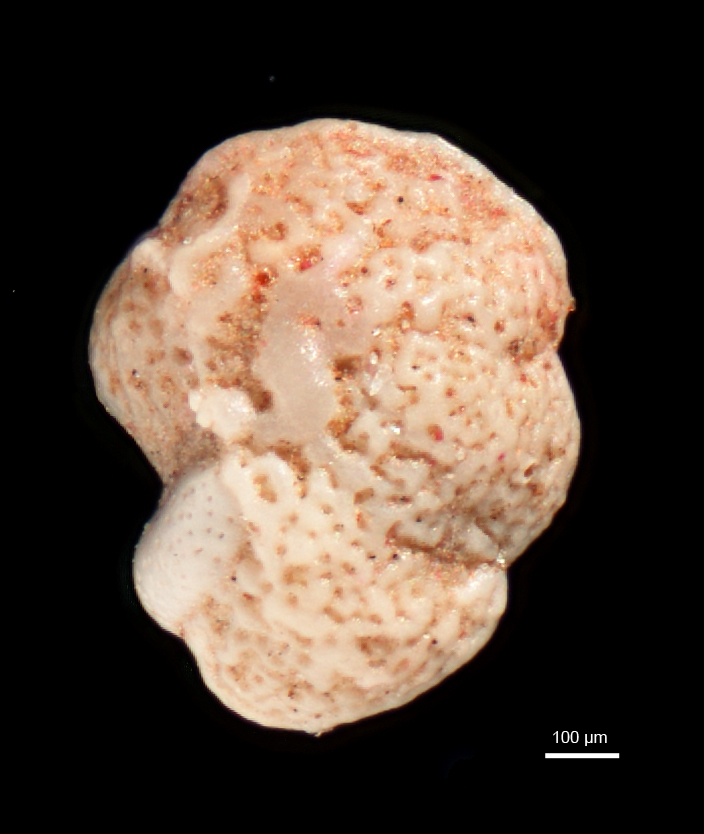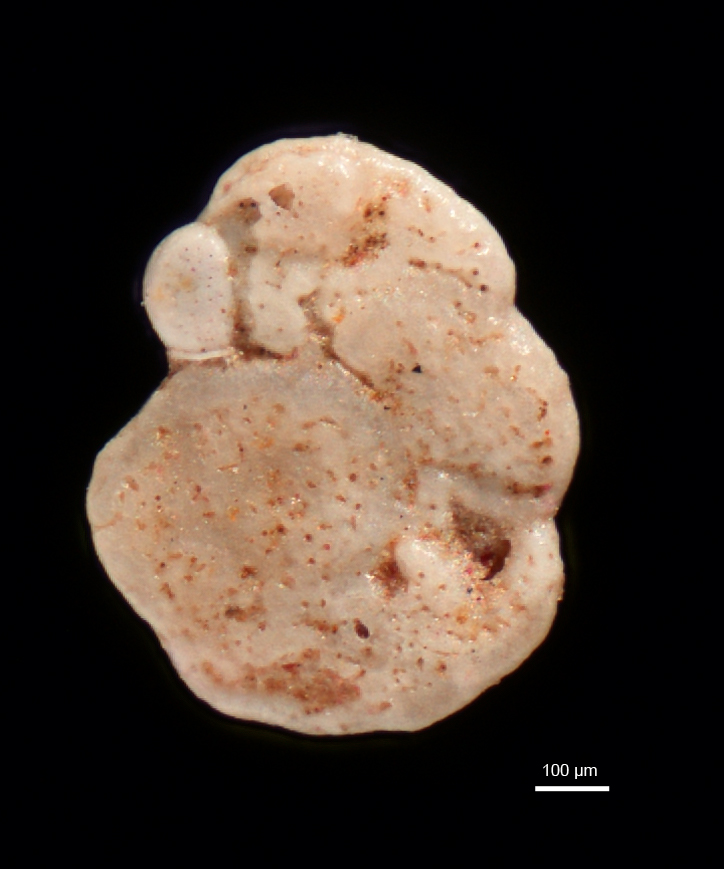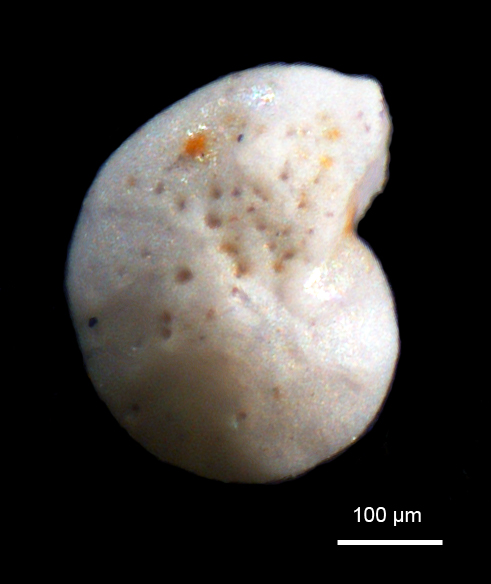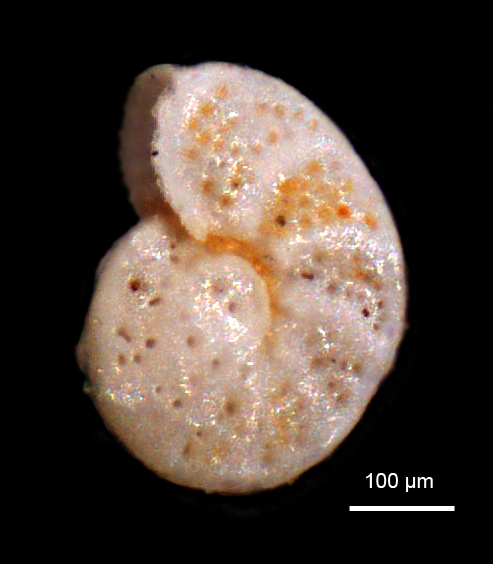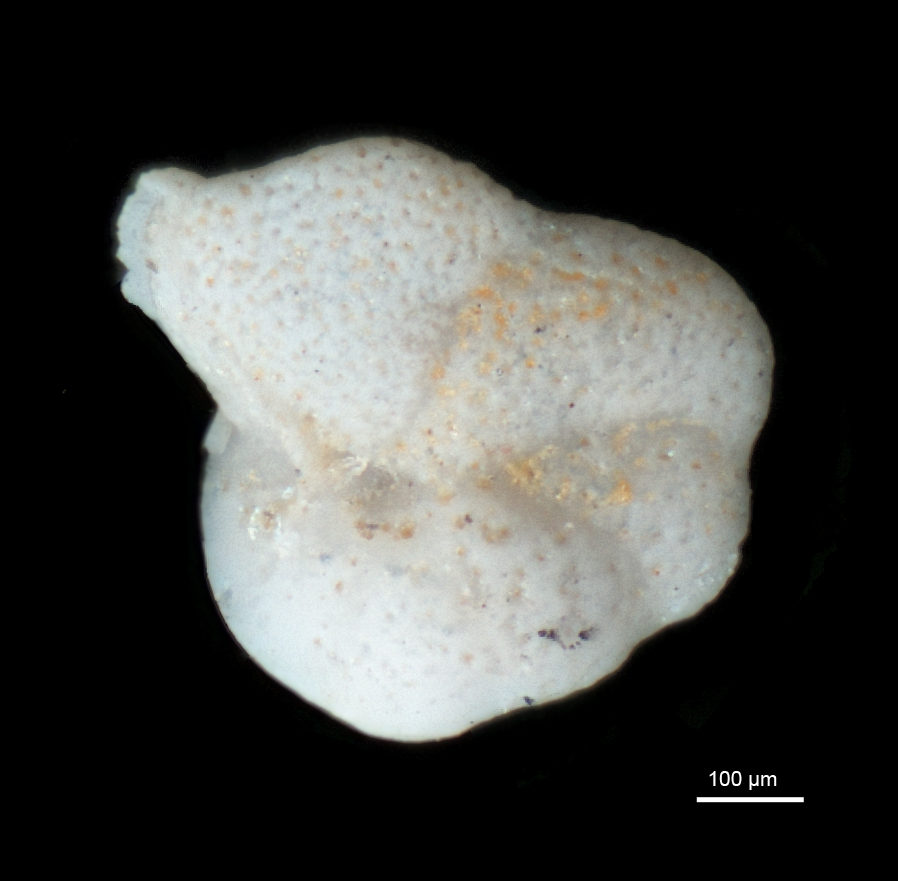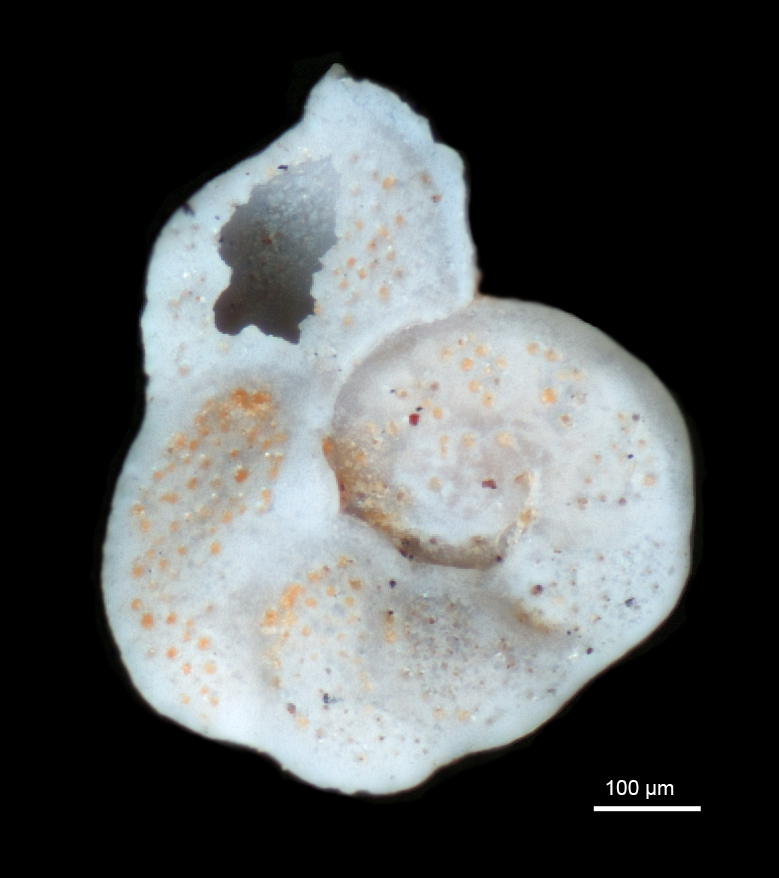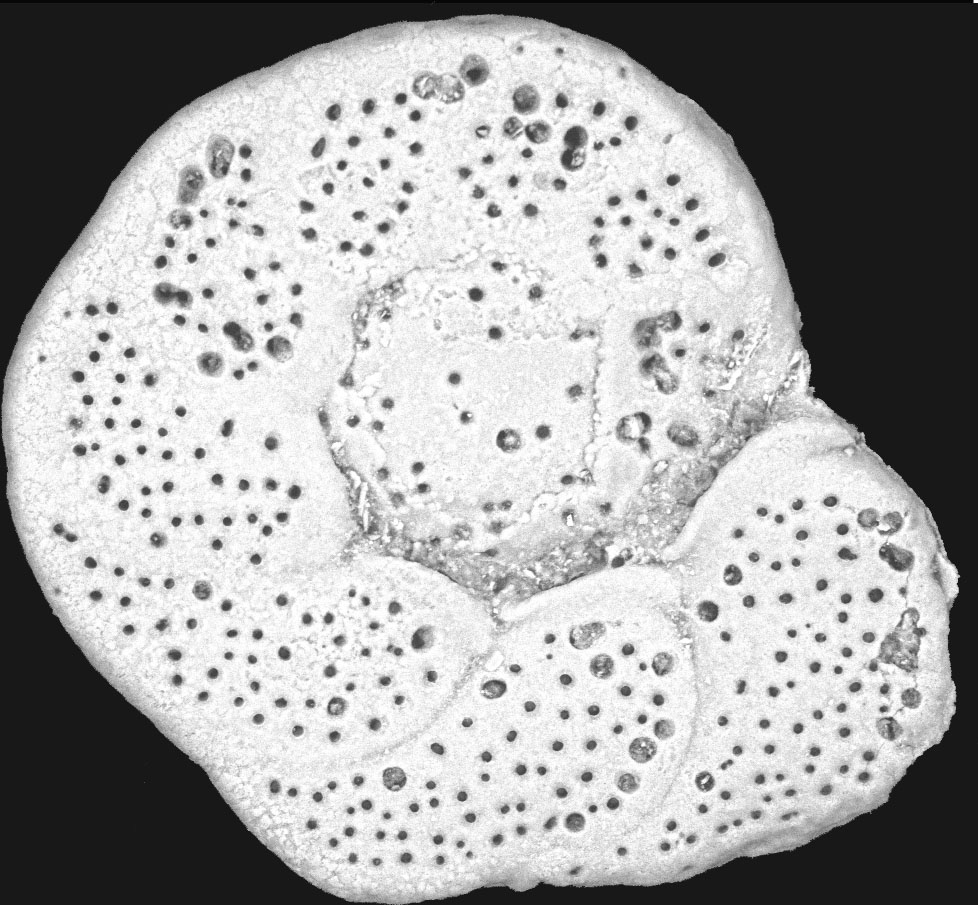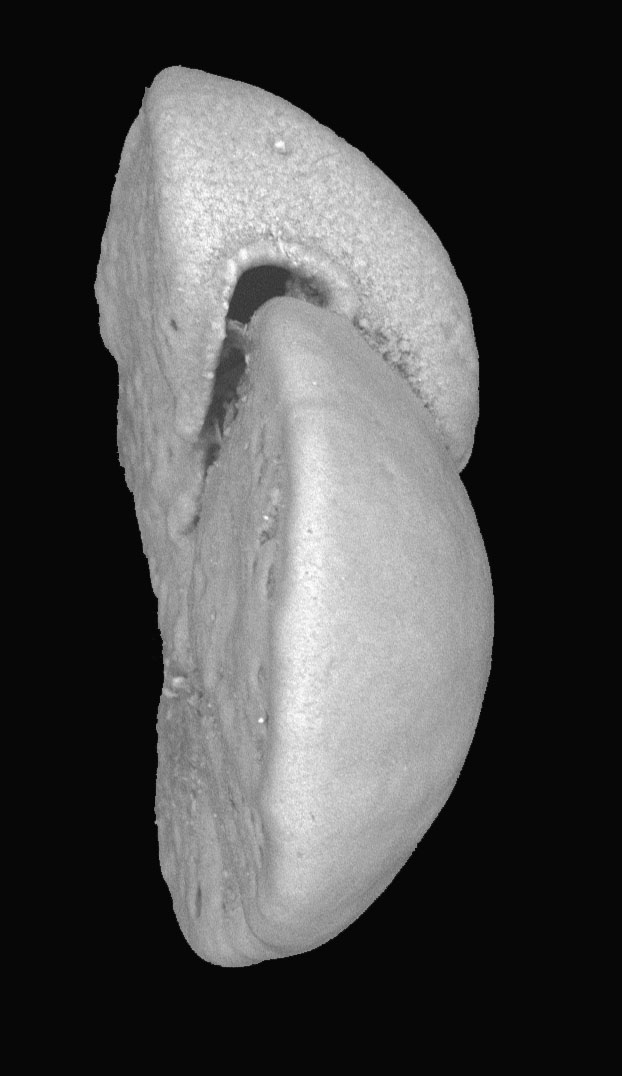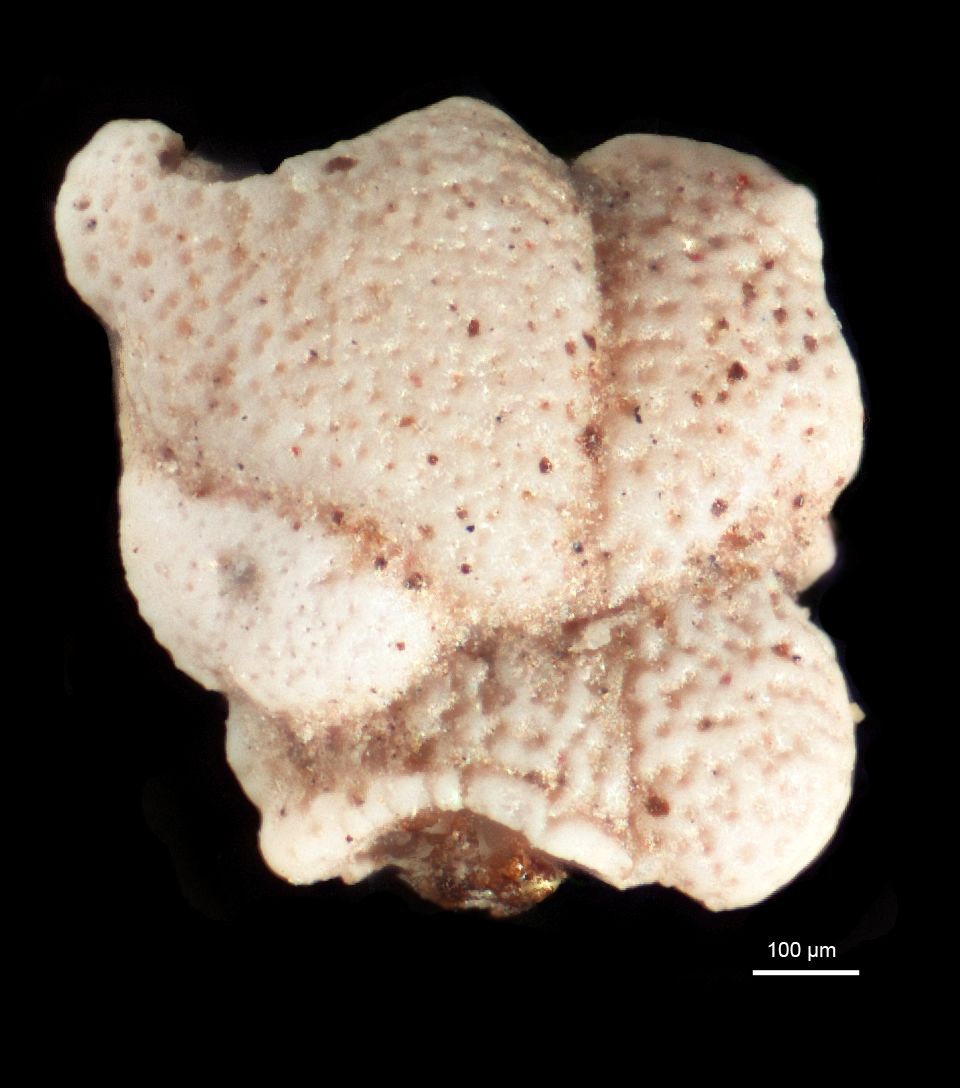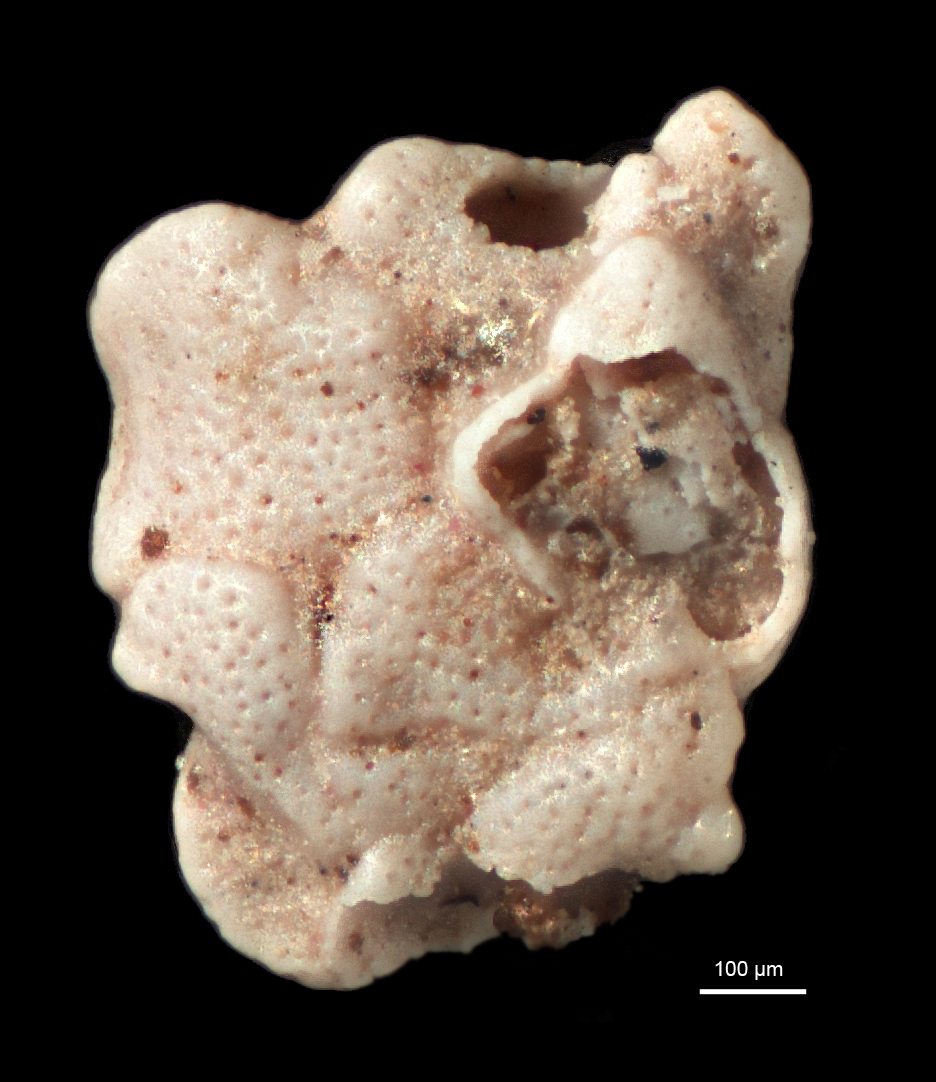Genus – Cibicides
Superfamily Planorbulinoides
Family Cibicididae
Cibicides de Montford, 1808
Loeblich and Tappan (1973) re-described this genus and Cibicides refulgens de Montfort is maintained as the type species.
A molecular phylogeny based on rDNA sequences of six common species in the family Cibicididae revealed that the morphological divisions into subfamilies are not valid (Schweizer et al. 2009). This study showed that Cibicides refulgens is distinct within the molecular phylogeny and retains the generic name because of nomenclatural precedence.
Cibicidids are generally stenotopic in normal marine conditions, and common species are frequently used for stable isotope and elemental ratio analyses. Some species, such as the ones described from Puget Sound, are attached to a harder substrate (e.g. pebble, sea grass stem, attached benthic invertebrates) and the shell conforms to that substrate. Thus they have variable morphologies and the axial profile reflects environmental conditions, not taxonomic affinities (Schweizer et al. 2009). Thus, these authors concluded that there is no justification for separating biconvex from planoconvex tests into the genera Cibicides and Cibicidoides respectively. Cibicides is distinguished by finer test porosity than other genera in the family.
This phylogeny by Schweizer et al. (2009) also demonstrated that C. lobatulus (Walker and Jacob), C. wuellerstorfi (Schwager) and C. ungerianus (d’Orbigny) are sister taxa and placed them into the genus Cibicidoides, and the genera Lobatula and Fontbotia are not valid.
Cibicides refulgens de Montfort, 1808
Cibicides refulgens de Montfort, 1808, p. 122. Cushman and Todd, 1947, p. 23, pl. 4, fig. 7; Loeblich and Tappan, 1973, fig 554, fig 1a–c; Lankford and Phleger, 1973, pl. 6, fig. 11;
Description from Cushman and Todd (1947): Test attached; plano-convex, trochospiral, spiral side flat to excavated, evolute, umbilical side strongly convex, involute; apertural face sharply angled with nonporous keel; wall calcareous, radial in microstructure; bilamellar, coarsely perforate on spiral side, large pores of early chambers may be closed by lamellar thickening of wall, finely perforate on umbilical side, aperture face nonporous; aperture a low interior-marginal opening with narrow lip, may extend along spiral suture on spiral side.
Remarks: Nylhom (1961) illustrated the wide morphological variability of the test of this species, attributing it to the attached life-style. This species is trochospirally high spired and has a strongly involute umbilical side.
Distribution: This species is recorded from high latitudes in both the southern and northern oceans. In their study of foraminifera of northern Puget Sound Cushman and Todd (1947) found C. refulgens only around the San Juan Islands. This study has found it in the northern regions and the Central Basin, particularly in Elliot Bay.
Cibicides fletcheri Galloway & Wissler, 1927
Cibicides fletcheri Galloway & Wissler, 1927; Bandy, 1953, p. 176, pl. 24, figs. 2 a–c; McGann, 2007, p. 68, pl. 11, figs. Q1, Q2.
Lobatula fletcheri (Galloway and Wissler, 1927) Vázquez Riveiros and Patterson, 2008, Figs 11.4a–c.
Description: Test attached to plants in life and sometimes slightly distorted, plano-convex, dorsal side slightly concave, ventral convex and typically with an umbo of clear shell material, oval in side view, slightly lobulated, periphery moderately sharp: chambers about twelve in the last coil, increasing rapidly in size, sutures curved on both sides, broadly limbate dorsally; wall coarsely perforate, the perforations being at the bottom of the conical depressions some of which on the ventral side are conspicuously larger than others; height 0.15 mm. Aperture an arched opening on the periphery not far produced ventrally but in the dorsal extending along the suture between the last two coils for a distance of four of five chambers, provided with a distinct lip. Diameters of type specimen, 0.65 m. Height 0.15 mm.
Remarks: This species is distinguished from the other cibicidids by the strongly limbate margin prominat on the dorsal side
Distribution: C. fletcheri was described from Pleistocene beds at Palos Verdes, California, and the Pliocene of Washington State. Now it is distributed along the coast from Alaska to Panama. In Puget Sound it is rare and widely scattered.
Cibicidoides Thalmamann, emed. Loeblich and Tappan, 1955
Description: Loeblich and Tappen (1955) emended the original description of this genus, but molecular rDNA studies (Schweizer et al., 2009) demonstrated that the morphological characters used to define Cibicidoides and to separate it from Cibicides are not valid. These characters include biconvex v. planoconvex test shape, and microstructure of the test wall. Test shape is variable in individuals of all species of this family because of their attached mode of life, and depends on the substrate surface
Loeblich and Tappan’s generic description is provided here for reference. Test free, trochospiral, biconvex and biumbonate, all chambers visible on the spiral side, only those of the final whorl visible on the umbilical side; wall calcareous, hyaline, with a series of coarse perforations on the spiral side, appearing only near previous spiral sutures in early portions of the test, but covering large portions of the spiral side of later chambers; aperture a low interiomarginal, equatorial arch with slight projecting lip.
Cibicidoides lobatulus (Walker & Jacob, 1798)
Nautilus lobatulus Walker and Jacob, 1798 (erroneously described in a molluscan genus)
Cibicides lobatulus Walker and Jacob, 1798; Cushman and Todd, 1947, p. 23, pl. 4, fig. 7; Cushman, 1948, p. 78, pl. 8, fig. 14; Bandy, 1953, pl. 24, figs. 3a, b; Todd, 1965, p. 52, pl. 22, fig. 1; McGann, 2007, p. 68, pl. 11, figs. S1, S2; Vázquez Riveiros and Patterson, 2008, Figs 11.5a–d.
Cibicidoides lobatulus (Walker and Jacob) Schweizer et al., 2009.
Description: Low trochospiral test, planoconvex in cross-section, involute, convex umbilicate side and slightly convex evolute spiral side. Coarsely perforated chambers on both sides.
Distribution: Cibicidoides lobatulus is widely distributed globally. Cushman (1948) noted that this is an abundant cold water species and shows great morphologic variability. Cushman and Todd (1947) recorded this species from almost all their stations both in the northern parts of Puget Sound, the Strait of Juan de Fuca and the outer coast. In our study, it occurs rarely in the northernmost region of Puget Sound.
Montfortella Loeblich and Tappan, 1963
Description: Test trochospiral, attached by the flattened, evolute, non perforate spiral side, with convex, coarsely perforate and involute umbilical side, periphery carinate; sutures curved, limbate and flush on the spiral side, depressed, curved and radial on the umbilical side, the depression deepening towards the umbilicus into a slitlike to tubular intercameral opening which extends completely through the test to open on the spiral side between the spiral apertural lip and the periphery, but not continuous with the apertural opening; wall calcareous coarsely perforate on the umbilical side, not perforate or with few scattered large pores near the outer chamber margin on the spiral side, wall radial in microstructure as seen in polarized light, apertural lips, border of intercameral openings, umbilical flanges and keel non perforate; primary aperture an interiomarginal equatorial arch as in Cibicides, extending onto the spiral side beneath successive apertural flaps to connect with apertures of the earlier chambers of the final whorl, a second series of opening present on the umbilical side beneath the triangular umbilical flaps near the umbilicus. Monotypic: genotype is Montfortella bramlettei.
Montfortella bramlettei Loeblich and Tappan, 1963
Cibicides tenuimargo Galloway and Wissler, 1927, p. 66, pl. 10, figs. 10a-c.
Cibicides gallowayi Cushman and Valentine, 1930, p. 30. Pl. 10, fig. 4.
Montfortella bramlettei Loeblich and Tappan, 1963, p. 214, figs. 7, 8, 9: McGann 2007, p, 68, pl. 11, figs. R1, R2.
Remarks: As with other members of Family Cibicididae, M. bramletti is extremely variable growth because they are attached, however Loeblich and Tappan (1963) noted that in all the specimens they studied of this species showed identical apertural characteristics and the diagnostic intercameral openings.
Distribution: The holotype of this species was collected off the beach in central California. In Puget Sound it has only been found off northern San Juan Island.

